#Australian lgbt history
Text

Source: A Decade Of Sydney Mardi Gras - Photos by Elio Loccisano
#dykes on bikes#lesbian history#lesbian positivity#lesbian photo#leather dykes#pride parade#Australian lgbt history#lgbt#image#photo#lesbian#personal#d slur
856 notes
·
View notes
Photo
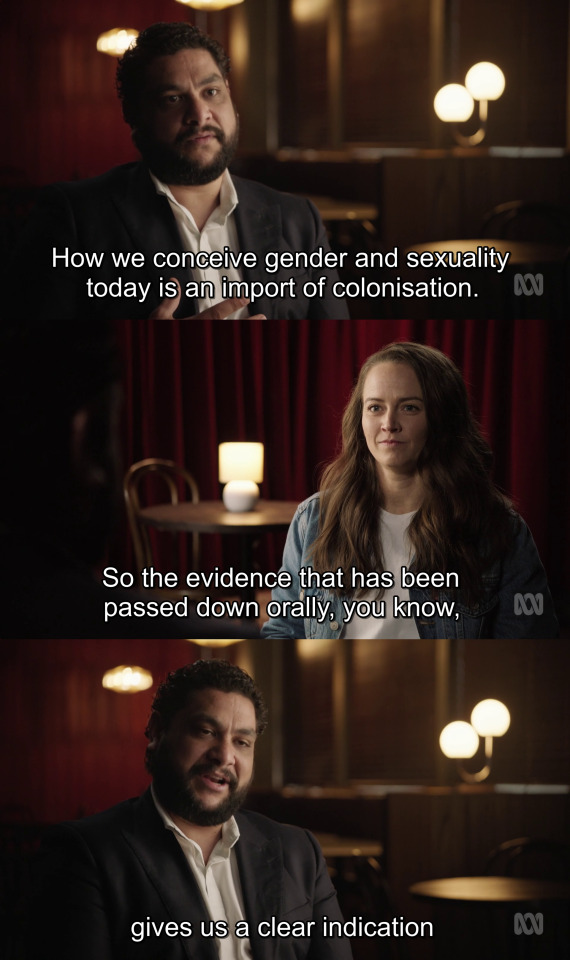
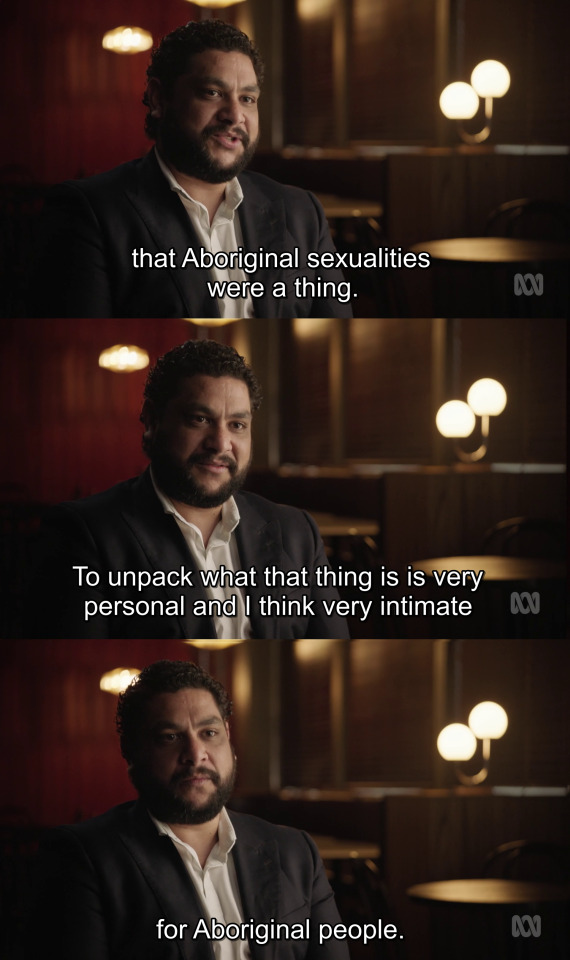


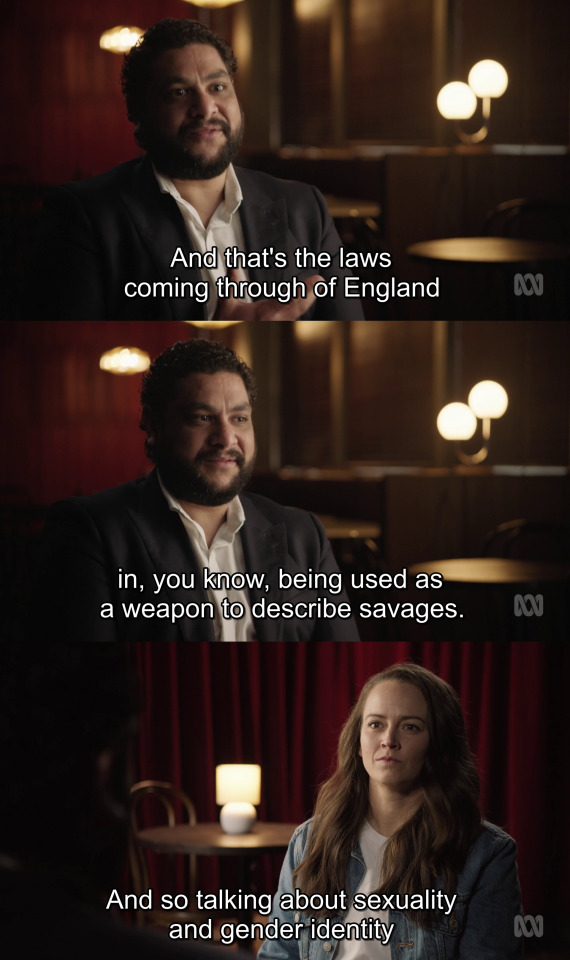
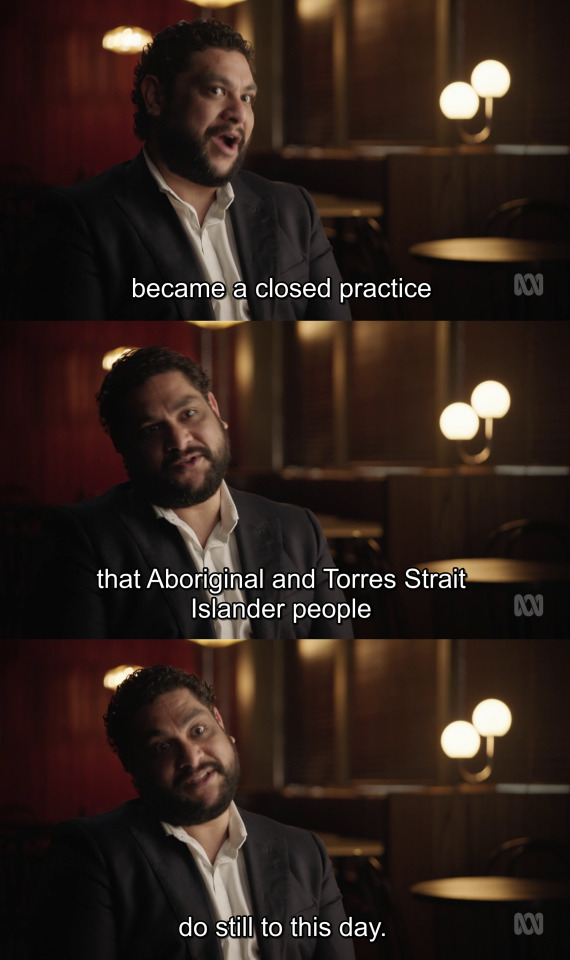
QUEERSTRALIA (2022) Episode 1
dir. Stamatia Maroupas
#queerstralia#documentaryedit#todd fernando#zoe coombs marr#lgbtqai#aboriginal#history#colonisation#aboriginal history#australian history#queer history#lgbt history#australian queer history#racism tw#homophobia tw
3K notes
·
View notes
Photo


The first Sydney Gay and Lesbian Mardi Gras was held on this day, 24 June, in 1978 in commemoration of International Gay Solidarity Day, and the ninth anniversary of the Stonewall Riots. A parade of around 1500 people was ambushed by police, ending in 53 arrests.
43 years on, the event has now blossomed into the biggest queer festival in Australia. This year it was celebrated as part of WorldPride, and the original protesters - known as the 78ers - led 50,000 people in a Pride march across the Sydney Harbour Bridge.
[I mages: police arrest a young man at the 1978 march; 78ers marching at WorldPride with a rainbow, black and pink banner reading “78ers The First Sydney Gay and Lesbian Mardi Gras Australia; still out and proud; 1978-2023″]
#mardi gras#78ers#queer history#australian history#pride#pride month#lgbt#lgbtq#queer#lgbt history#gay history
1K notes
·
View notes
Text

Fear of AIDS (1993), William Yang
#William Yang#gay artists#black and white photography#gay#lgbt#queer art#queer history#australian art#australian photographer#gay photography#gay art
193 notes
·
View notes
Note
Hello, State Library staff person! Does SLQ have much archival material about queensland queer history? I've got a novel on the backburner involvinglesbian history in rural queensland. It's going to need a much heftier research process than I've done for other projects, and I was thinking SLQ could be a good starting place for it.
Hello!
What an amazing concept for a novel - will it be a nonfiction piece or a fiction piece? I hope you'll be interested in providing a legal deposit copy of it to the library once it's published!
In terms of LGBTQIA+ collections, not only do we have a selection, but we are also always working to increase and broaden our holdings to better reflect the experiences of all Queenslanders.
We have a launch pad for research into our LGBTQIA+ collections right here: LINK
Last year we also introduced a Rainbow Research Fellowship, which is (up to) $20,000 awarded annually and is given to a researcher dedicated to uncovering and sharing LGBTQIA+ stories within our collections. So if you're looking for a way to get that project off the backburner and you'd like to spend some time neck-deep in collections....
Also, as a side note: did you know that Queensland's first premier, Robert Herbert, had a male companion (John Bramston) with whom he lived, combined last names, and named their house this combined last name in testament to their bond?
#sometimes it's difficult to point at historical collections and say things like this one is definitely an LGBTQIA+ collection#But that is because so much of that history has been recorded between the lines#and Queensland has been a hotbed of both anti-LGBT policy and activism especially throughout the middle and latter parts of the 20th centur#there are so many more collections that contain content related to this history#you just have to go looking for it#also#highly recommend taking a look on trove#and perhaps researching the women's land army of World War Two#If you're looking for a Queensland-centric female heavy environment to set a fictional story like this it's ideal#slq#libraries#state library of queensland#library#queensland#from the collections#queensland history#australian history#history#lgbtqia#lgbt history#queer history#Australian queer history#also anon if you'd like access to any collections that aren't digitised you can submit an 'ask us' query to the SLQ website#and a librarian can scan or photograph whatever you're after for you#we're here to help and we so so want to share our collections with you#I know there's a chronology of the earliest known LGBT activism and movements in QLD somewhere in collection 31134#I will pull it out and take a look at it for you today#asks#anon#anon post
22 notes
·
View notes
Photo

David Stevens (deceased)
Gender: Male
Sexuality: Gay
DOB: 22 December 1940
RIP: 17 July 2018
Ethnicity: White - Australian
Occupation: Writer, screenwriter, director
#David Stevens#lgbt history#lgbt#lgbtq#mlm#male#gay#1940#rip#historical#white#australian#writer#screenwriter#director
44 notes
·
View notes
Photo

For the next 10 days my campaign to raise funds for my Queer Gothic Horror Comic 'Lace' will be up on the Australian Cultural Fund Website. Please donate if you can! Funds will cover printing cost, editing, conventions and allowing me to eat!
https://artists.australianculturalfund.org.au/s/project/a2E9q000000CWVGEA4/queer-gothic-horror-comic-lace
#indie comics#gothic horror#horror comic#indie artist#australian cultural fund#milsmakesart#queer art history#regency#edwardian#lgbtq characters#lgbt representation#lgbtq#queer#queer romance
8 notes
·
View notes
Text
In 1973, being gay was no longer a crime in Australia. This was controversial, and the federal bill to end homosexuality being a crime only passed with a very narrow margin. Individual states still criminalised homosexuality. Queensland had these laws up until 1991. Tasmania had them until 1997. Gay Panic laws remained in place until 2014. The Australian and New Zealand Psychological Association were the first psychological association worldwide to declare that homosexuality was not an illness – this also occurred in 1973.
The first Mardi Gras was in 1978. Mardi Gras was created by The Gay Solidarity Group in Sydney, who were formed in solidarity with events that were happening over in San Francisco in the USA. This happened to line up with the visit of the homophobic campaigner Mary Whitehouse to NSW. The Gay Solidarity Group existed as an off-shoot of CAMP, which was lead by John Ware (a gay man) and Cristabel Poll (a lesbian). Mardi Gras was headed by a group of drag queens from Oxford Street, many of whom had been doing drag in secret for quite some time.
Extreme police brutality occurred – 53 people were arrested, and many more were injured. Mardi Gras became an annual event once the news covered this brutality, and more queer people decided to participate.There was a massive media campaign to drop the charges against the people who were arrested on the night of Mardi Gras. 3,000 people marched in the 1979 parade, where no further (recorded) police brutality occurred.
By 1980, there was a divide in the community between radical gay lib people (who saw the parades as protests) and less revolutionary queer folk (who saw the parades as a celebration). Debates started opening up about whether or not businesses should have a role in Mardi Gras – debates that are very much on-going. Many of the more radical queer folk refused to attend Mardi Gras as a result of the commercialisation of the event.
The 1985 Mardi Gras was the beginning of real pride momentum – the AIDS crisis meant that more people than ever were eager to have “one last party”. To date, 6845 people have died of AIDS in Australia. While the Australian government was more receptive to anti-AIDS action than elsewhere, the AIDS crisis still saw an increase in homophobia-based crimes, and the need for solidarity in the queer community was stronger than ever. The Mardi Gras is still a very important event in the Australian queer calendar, and it is crucial that we remember why it was needed in the first place.
For more information:
https://www.pridehistory.org.au
https://www.78ers.org.au/about
[do not tag this “q slur” or similar]
@genderdoe-sly
#australia#queer history#queer#Australian pride#pride#mardi gras#queer stuff#lgbt#tw homophobia#tw violence#tw police brutality
28 notes
·
View notes
Text

The anti-transportation movement used contemporary fears of social contagion to advocate against the transportation of convicts to the colonies (in this poem, the colony of Van Diemen's Land-- lutrawita in Palawa kani, or Tasmania in English). The prevalence, and relative acceptance, of sodomy within the penal system was believed to be a 'taint' that could spread to the population of free colonists-- particularly amongst the morally vulnerable.
This poem is especially political-- the use of Tasmania/Tasman's Isle is a deliberate attempt to cut ties with the penal history of the name Van Diemen's Land.
#homophobia#political homophobia#nineteenth century#australian history#queer history#lgbt+ history#gay history#convicts#convict history
1 note
·
View note
Text
Hey, so for Watcher fans who may not wanna pay for another subscription or just wanna watch something new here are some other youtubers you should take a look at if you want to get a spook or learn some history
(* = potentially triggering topics covered usually associated with crimes, so be careful)
Ghost Hunting and general spooky vibes:
AmysCrypt - Your typical ghost hunting show with two Australians traveling the world, though I will say they do go to places I've never heard of before and they do very good research. And there are some goofs along with the spooks.
The Ouija Brothers - Two British dudes finding ghosts in England. The vibes are generally pretty chill and it's a good time
The Paranormal Scholar - A mixed bag of all paranormal happenings from ghosts to demons to cryptids and aliens. Sort of an overview to deepdives on various paranormal occurrences. The research is immaculate and their voice is very soothing in my opinion.
Paranormal Quest - Ghost hunting in the US, sometimes goofy sometimes serious, but they do go to some interesting places and some familiar ones too
Weird History:
ObsoleteOddity* - This guy is great, like 80% of the things he covers I've never heard of before. Very atmospheric, fun little visuals, and a large variety of weird events and people for topics.
Georgia Marie* - A little bit of everything, but she focuses on strange things that have happened, lgbt history, true crime, and historical disasters. She covers enough of everything that I'm sure you'll find something
Stefanie Valentine* - I'm not sure if she even posts anymore, but I thought what she was doing was great. Think Vampira or Elvira but for older true crime and ghost stories, I think the latest covered would have been like early 1900s. Idk I just thought it was like a cute spooky lil storytime
Caitlin Doughty or Ask A Mortician* - Pretty sure y'all would know who she is but just in case, she's a mortician who covers topics relating to death! From odd ways people have died, or odd things that have happened to people after they've died. And just odd or tragic things that have happened through history. It's silly, but done with levity and care and respect the topics deserve.
General History:
Part-Time Explorer - Mostly history on ships and ghost towns with the occasional train. Lots of research and interviews, very well done and worth checking out even if it may not be your thing.
History's Forgotten People - Talks about sometimes obscure, or sometimes not, historical individuals. Even if you've heard of the person in the topic, they'll talk on something obscure about that person.
History Tea Time with Lindsay Holiday - A heavy focus on royalty around the world, a generally upbeat dive into historic individuals.
(Or you could always go watch time team, that's an option and it's my guilty pleasure love me some archeology)
True Crime:
There are so many out there, so I'll just recommend two of my favorites
Gabulosis* - She focuses on vintage cases 20 years or older (literally in her opener) and is well researched and respectful. Another one that talks on cases I've never heard of that deserve to be heard.
Mysterious WV* - True crime and missing persons based in the West Virginia area and neighboring states. Idk how to even explain the vibes. This guy is just great please watch him trust me you won't be disappointed.
That's all for now, feel free to add your own recs out there!
#or you can just go watch night mind lol#watcher#ghost files#mystery files#puppet history#too many spirits#youtube recommendations#youtube recs#ghost hunting#history#true crime#let me know if you want any more
1K notes
·
View notes
Photo

On this day, 14 June 2014, LGBT+ activists visited Cato Island in the uninhabited Coral Sea Islands and declared an independent Gay Kingdom in protest at discrimination against same-sex couples by the Australian government, which governs the islands. The Australian government at that time was attempting to change the law to prevent same-sex couples married overseas having their relationships recognised in Australia. One Dale Parker Anderson (pictured) raised a rainbow flag on the island, declared himself Emperor, and claimed the Coral Sea Islands as a homeland for gay and lesbian people. The Gay and Lesbian Kingdom of the Coral Sea Islands, as it was formally named, dissolved itself after Australia legalised gay marriage in 2017. This Pride month, check out our timeline of LGBTQ history in our Stories app: https://stories.workingclasshistory.com/tag/7789/lgbtq-history https://www.facebook.com/photo.php?fbid=644214321085120&set=a.602588028581083&type=3
329 notes
·
View notes
Text
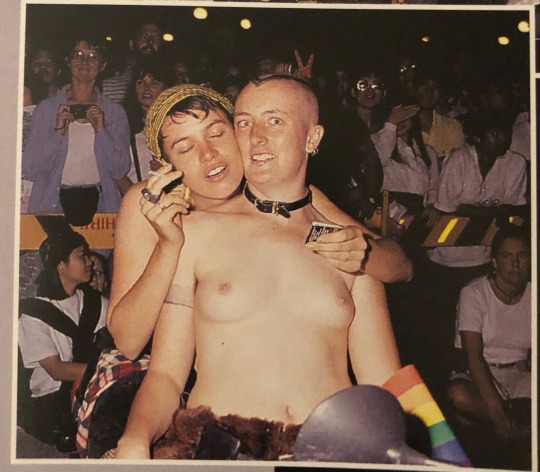
Source: A Decade Of Sydney Mardi Gras - Photos by Elio Loccisano
#I’m keeping my eye on you tumblr#butch positivity#butch history#gnc women#dykes on bikes#lesbian history#Australian lgbt history#leather dykes#lesbian fashion#lesbian love#lesbian photo#bisexual history#bisexual positivity#d slur#lgbt#image#photo#lesbian#personal
334 notes
·
View notes
Photo







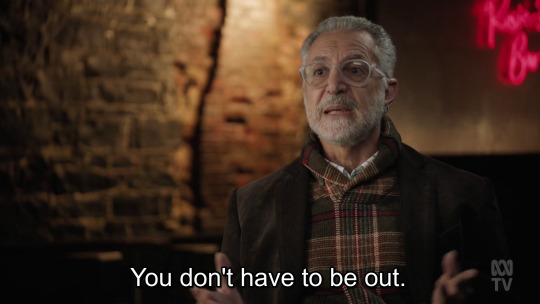
QUEERSTRALIA (2022) Episode 3
dir. Stamatia Maroupas
#queerstralia#documentaryedit#dino hodge#history#lgbtqai#lgbt#lgbtq#sexuality#australia#australian history#lgbt history#queer history#australian queer history#gay#lesbian#bisexual#australian tv#australian television
24 notes
·
View notes
Text
I wrote this because I am a queer woman who craves queer history, and researching the past helps me navigate my identity in the present. ... This is a love letter to the queer women who paint the history books lavender.
-Danielle Scrimshaw, She and her Pretty Friend: The Hidden History of Australian Women who Love Women (2023)

I'd highly recommended everyone (especially queer Australians) check out She and Her Pretty Friend by Danielle Scrimshaw! It's the first book of its kind in Australia, exploring the history of queer women in Australia through a series on individual's stories. We were also lucky enough to interview Danielle earlier this month!
#she and her pretty friend#danielle scrimshaw#queer history#wlw#lesbian history#women's history#australian history#queer#lgbt#lgbtq#lgbt history
235 notes
·
View notes
Text
Why did I research the 1944 murder of Warwick Meale for over 10 years?
#Tiktok#true crime#australian history#gay history#queer history#lgbt#gay#ww2#ww2history#booktok#bookblr
102 notes
·
View notes
Text
Before 1933, Germany was a center of LGBT+ community and culture, with several renowned organizations serving and supporting trans and gender non-conforming people. Hitler’s Nazi government, however, brutally targeted the trans community, deporting many trans people to concentration camps and wiping out vibrant community structures. As transgender people are now increasingly targets of discriminatory legislation and hate, join the Museum for a program exploring these stories and experiences prior to and during the Holocaust.
This panel conversation will feature Dr. Anna Hájková, Associate Professor of Modern European Continental History at the University of Warwick; Dr. Katie Sutton, Associate Professor of German and Gender Studies, School of Literature, Languages and Linguistics at Australian National University; and Dr. Bodie A. Ashton, a Postdoctoral Researcher and Lecturer at Universität Erfurt, with moderator Rabbi Marisa Elana James, Director of Social Justice Programming at Congregation Beit Simchat Torah in New York.
youtube
127 notes
·
View notes